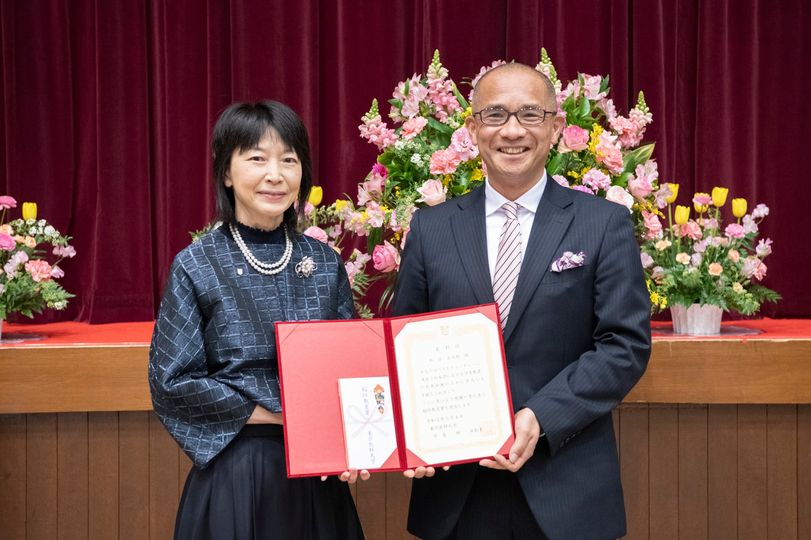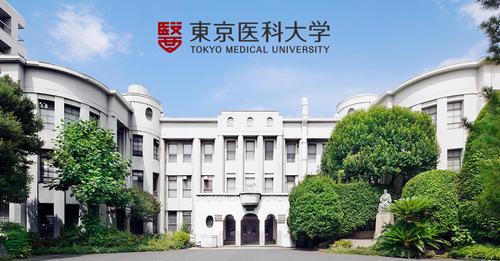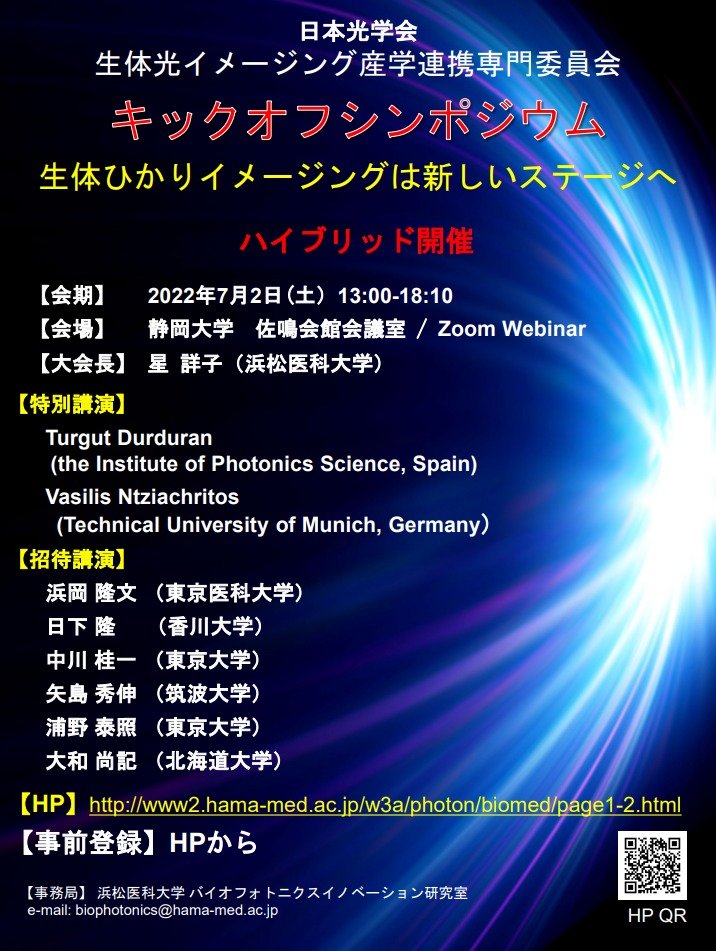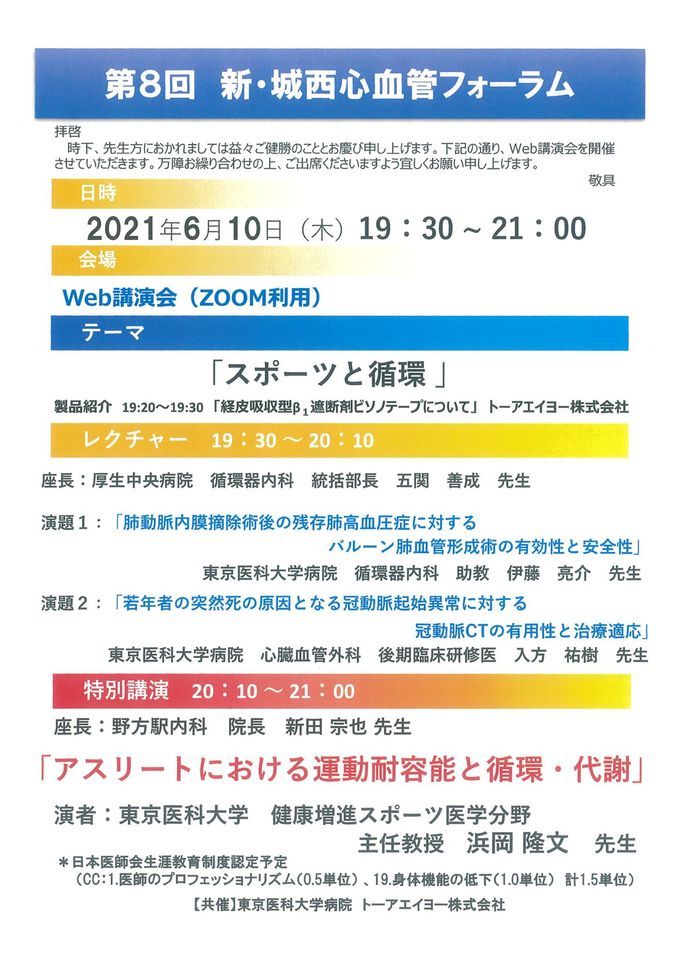ベストティーチャー賞は医学科の学生にアンケートを行い、その評価により選出されます。
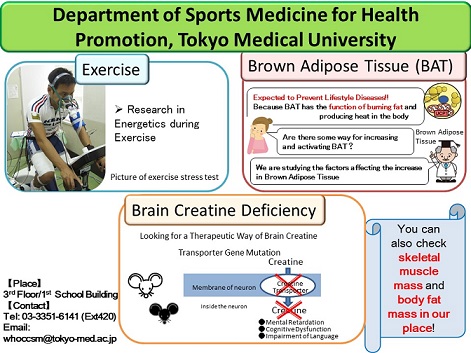
1) Exercise for health promotion and disease prevention
In 1991, a WHO Collaborating Center for Health Promotion through Research
and Training in Sports Medicine was established in our department, the
first in the world (cancelled in 2005). Since then, we have been collaborating
domestically and internationally with governments, research institutions
and research organizations to widely provide guidelines, programs and research
opportunities as well as to exchange information in health promotion and
sports medicine. Particularly, we take part in the development of the International
Physical Activity Questionnaire (IPAQ) that is now utilized globally.
2) Evaluation of physiological response to exercise
Our group is investigating physiological response to exercise with non-invasive
measurement methods such as magnetic resonance spectroscopy, near-infrared
spectroscopy and ultrasonic Doppler. For example, we examine the mismatch
between energy metabolism in skeletal muscle and dynamic changes in muscle
oxygenation, heterogeneity of tissue oxygenation, and blood flow redistribution,
primarily focusing on visceral blood flow. Outcomes obtained from those
experiments support the prevention of lifestyle-related disease and help
us develop an effective exercise strategy for cardiac rehabilitation.
3) Translational research at cardiac rehabilitation center
At the Cardiac Rehabilitation Center, heart and blood vessel disorder rehabilitation
is conducted for patients with coronary artery disease, chronic heart failure
and peripheral artery disease as well as patients after cardiac surgery.
The clinical data obtained will support innovation of a new clinical application
for medical checkup systems using the peripheral circulation index determined
by near-infrared spectroscopy and ultrasonic Doppler.
4) Brown adipose tissue as a therapy
Increased metabolism at rest has an effect to prevent obesity and lifestyle-related
disease and brown adipose tissue is associated with cold-induced thermogenesis,
glucose metabolism and insulin sensitivity. Thus, it is expected that production
of brown adipose tissue could prevent obesity and lifestyle-related disease.
Brown adipose tissue is activated by cold stimulation (for example; 17°C
for 2 hours every day for 6 weeks); however, this cold stimulation is not
practical to perform on a daily basis. Thus, we are examining other possibilities,
such as activation by certain foods and sports.
5) Effect of Nattokinase in humans
Natto is a traditional Japanese food eaten for more than one thousand years
and a recent report revealed that its viscous component contained an enzyme,
nattokinase, which can directly digest thrombus. In vitro and in vivo experiments
demonstrate that the enzyme activates fibrinolytic pathways while it reduces
thrombus formation by downregulation of coagulation pathways, in addition,
it is thought to have anti-hypertensive and anti-inflammatory functions.
However, the mechanisms and efficacy of nattokinase in the human body have
not yet been defined. Thus, our group is focusing on the effect of oral
administration of nattokinase on the prevention of thrombosis.
6) Prevention of economy class syndrome
Deep vein thrombosis (DVT) or economy class syndrome is a problem for perioperative
patients as well as healthy people who hold a sitting position for a long
time in an airplane or at a computer desk. But it is unclear how a long
term sitting position physiologically affects our body. Furthermore, DVT
has a risk to develop into a pulmonary embolism and there is an urgent
need to establish a treatment method. Our laboratory is investigating therapeutics
to reduce the risk of DVT by testing thin tights and ankle joint exercise.

